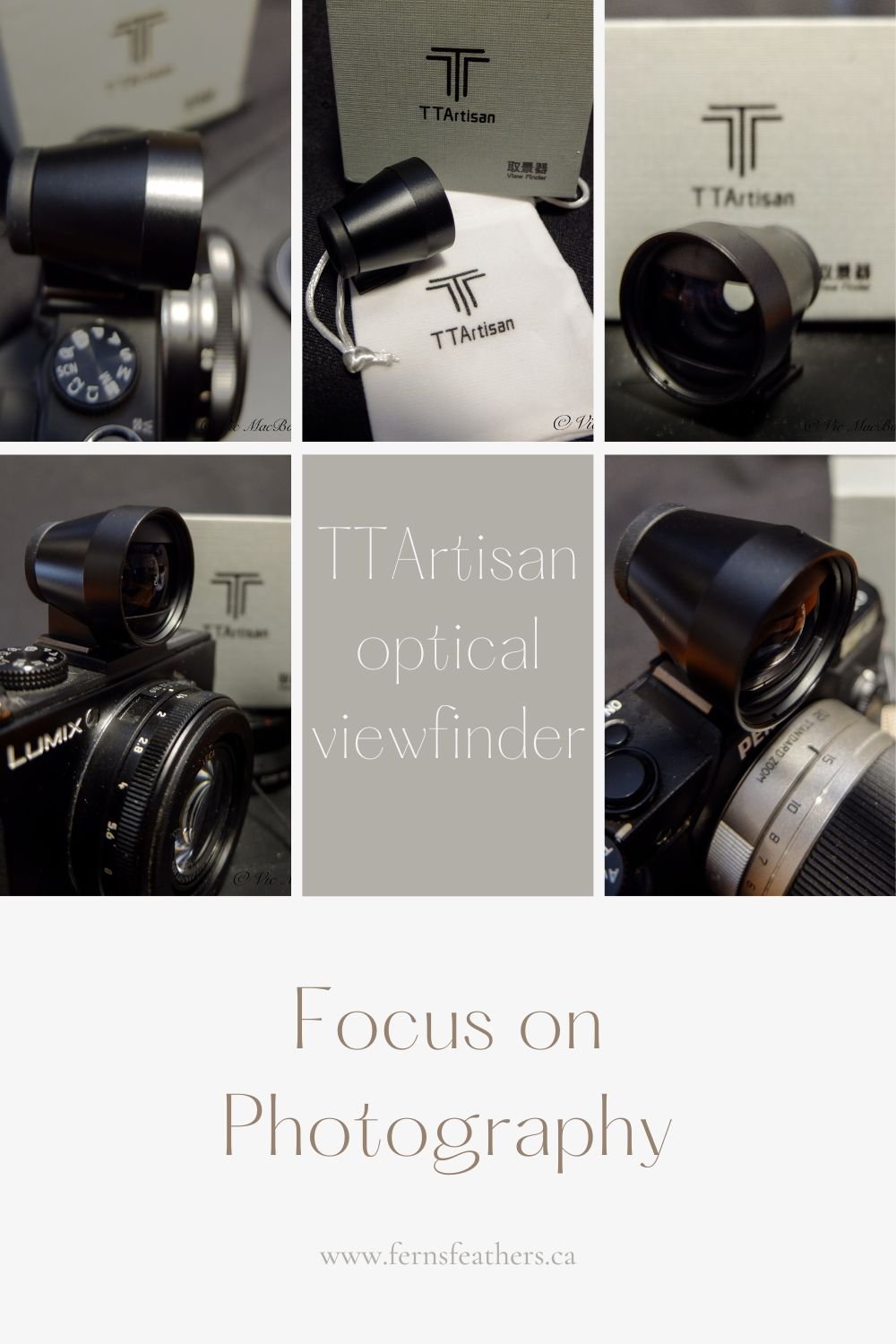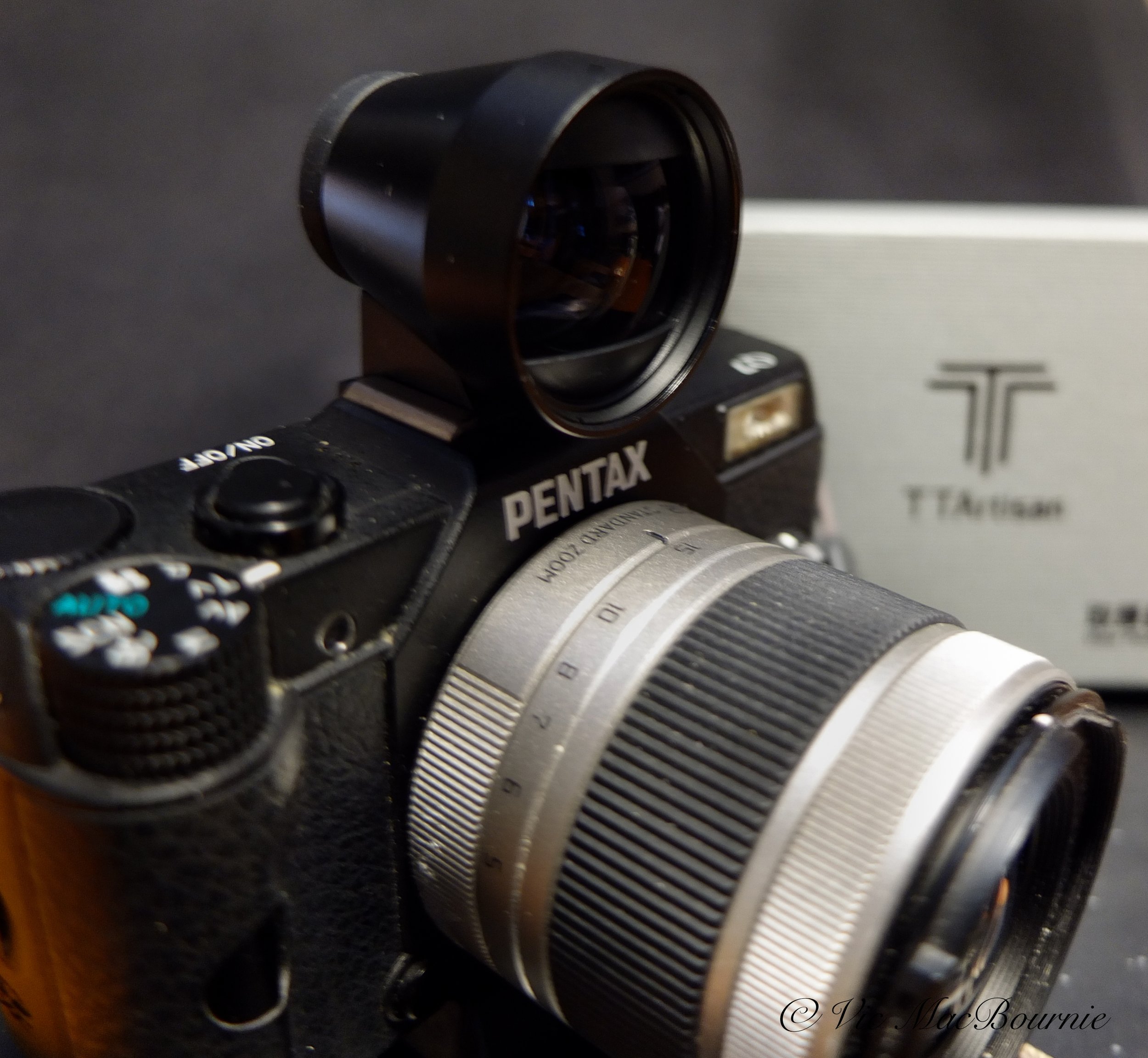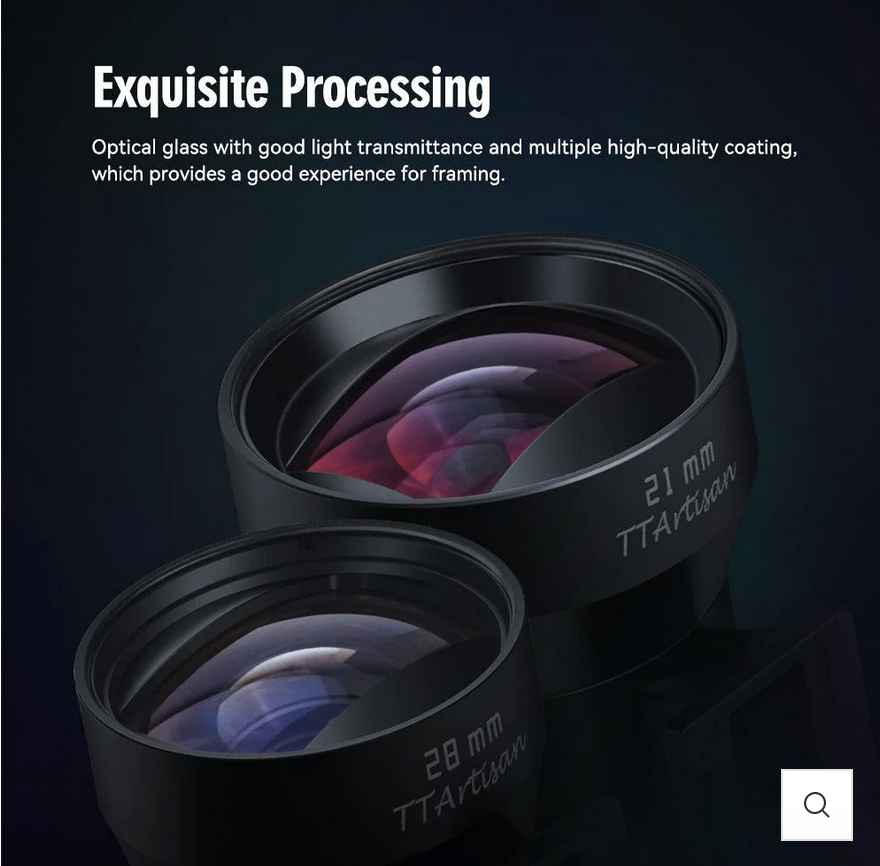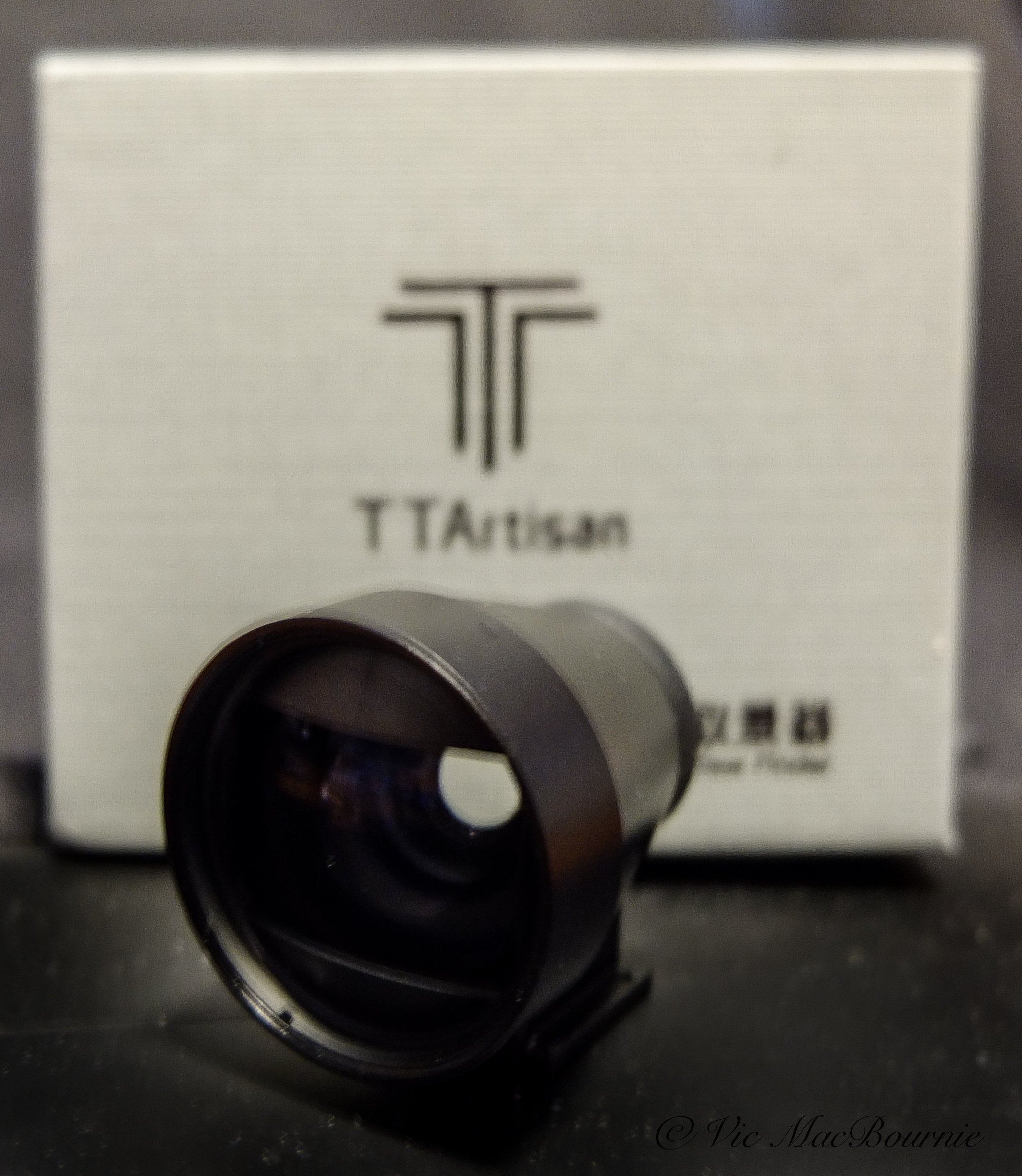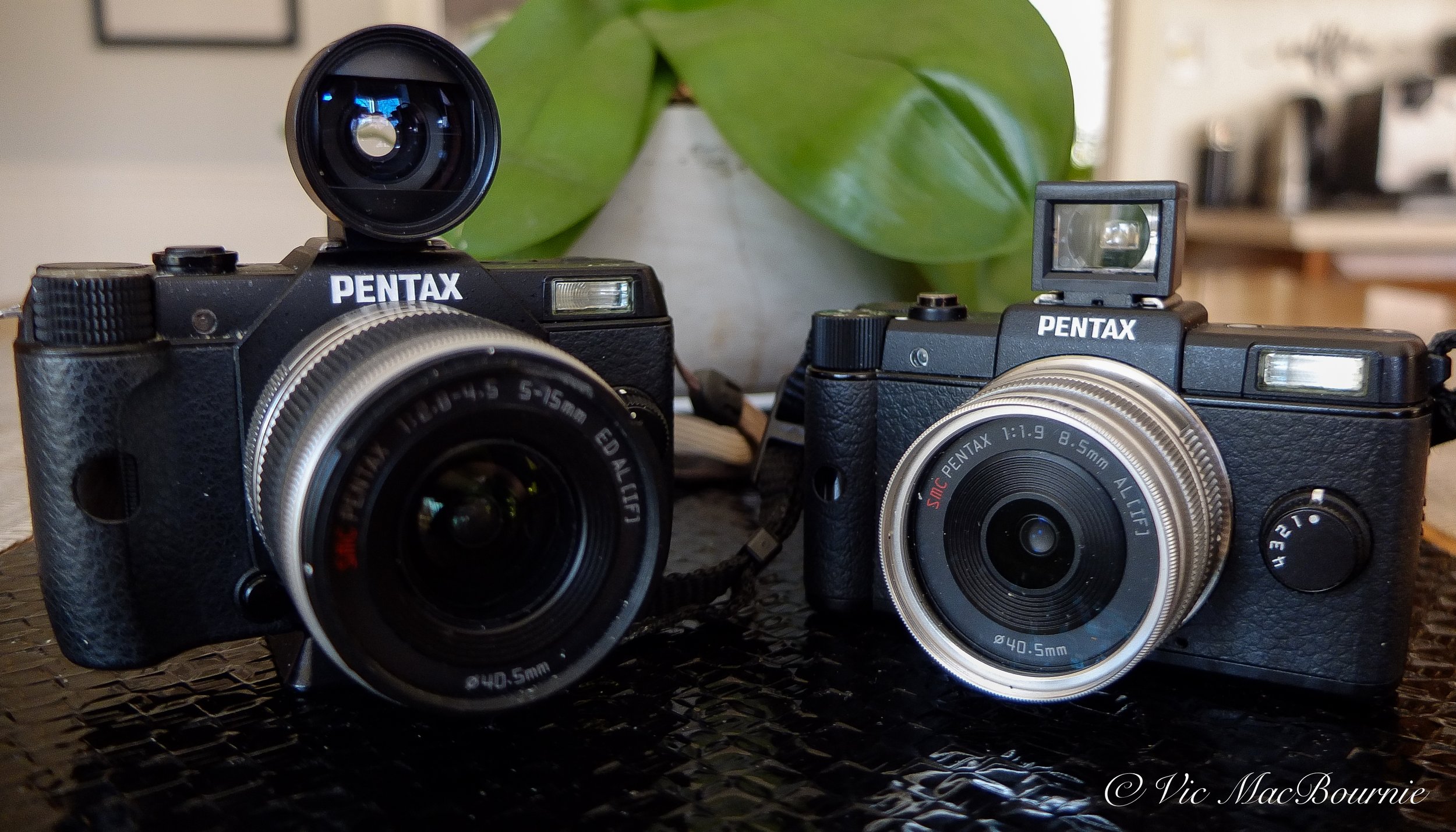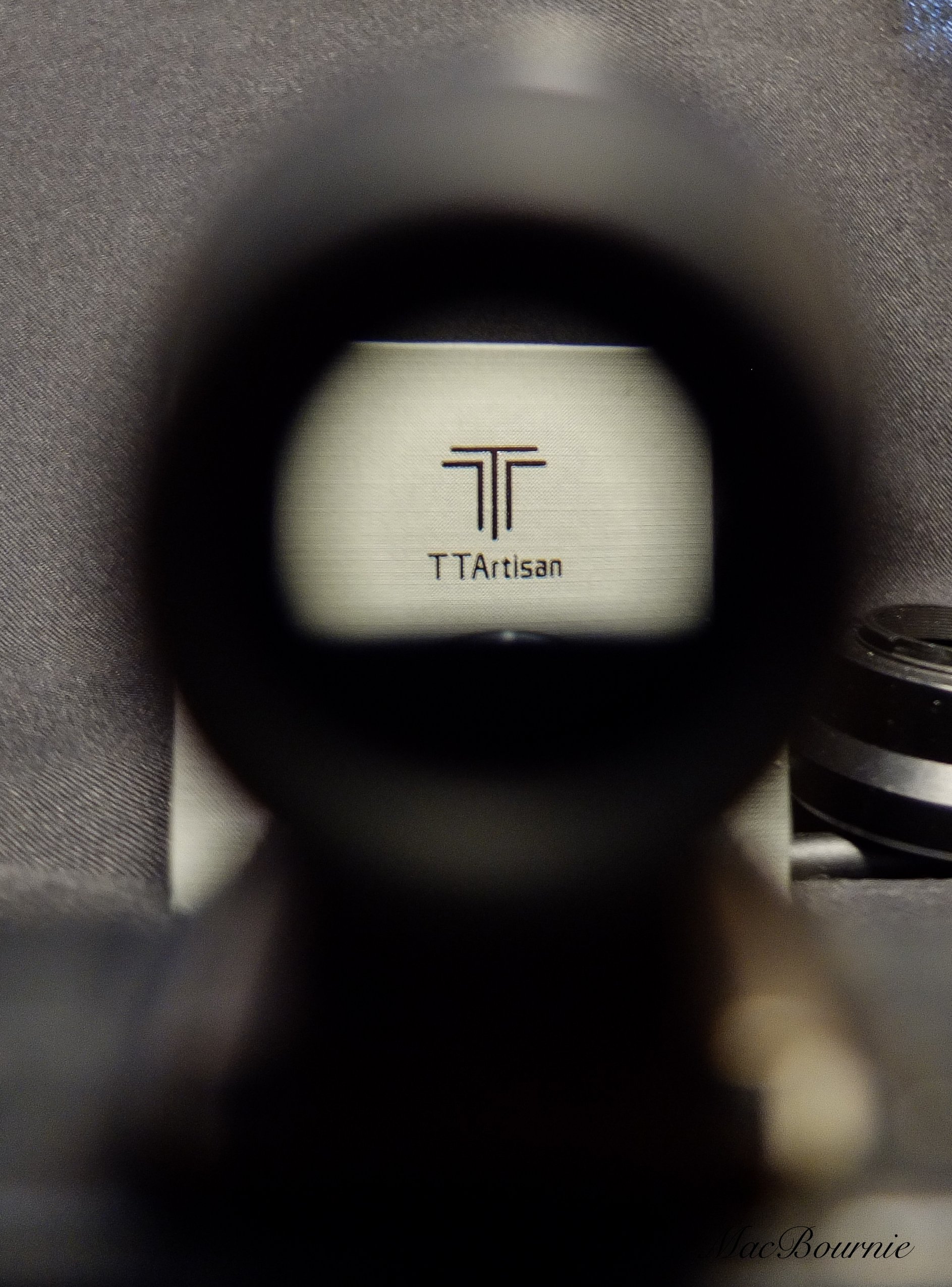Why you need the TTArtisan optical viewfinder(s)
Exquisitely made, exceptionally beautiful: And they work great
If a viewfinder on your camera is important to you, but you are stuck with one of the many modern non-viewfinder digicams, you owe it to yourself to check out one of the TTArtisan optical viewfinders.
And, if looking sophisticated while you’re out photographing in the field or checking out your images at the local coffee shop ranks right up there with your photographic results, then you need to run out immediately and pick up one of these little gems as fast as physically possible.
For more on the TT Artisan, check out my story on the Olympus PEN camera system.
Are there parallax correction problems? Of course. Without the highlight lines in the finder, it’s difficult to get exact framing. And, if you look into and to the right or left in the viewfinder you are able to see much more of the view. My response: by using the viewfinder regularly, you’ll get a good feel of how the it performs and, unless you are a real stickler for details, you’ll be happy with its performance.
“Like the sound of a Leica shutter in action, there is something simply elegant about a beautiful camera with an exquisitely designed viewfinder that makes you want to bring it up to your eye and use it at every opportunity possible. ”
Whether it’s the 28 or the larger 21mm optical viewfinder, these exquisitely made glass and black anodized aluminum viewfinders made in China are an absolutely gorgeous addition to even the most expensive digital or 35mm film cameras. Leica comes to mind, but I’ll be pairing my 28mm TTArtisan viewfinder with my Pentax Q and Lumix LX7 cameras. Panasonic does sell it’s own very similar optical viewfinder for a considerably higher price.
It’s important to note that none – not a bit – of the information like F-stop, shutter speed or focus indicator is passed through to the finder. There are no electrical contacts on these viewfinders.
The company’s information points out that: “The TTArtisan viewfinder can be used on cameras with cold shoe mounts, such as the Ricoh GR, the Leica rangefinder cameras, old-fashioned film cameras, etc. For cameras with the original viewfinder, the TTArtisan viewfinder can be used as a great decoration.”
My recommendation is: Just get one. You won’t be disappointed. Heck, pick up both the 28mm and 21mm while they are still reasonably priced.
I got mine on sale from AliExpress for a good price, but you can also purchase them from Amazon and some of the better photographic outlets.
Trust me, you’ll love using it and, as a bonus, look incredibly cool in the process.
I have to admit that, while I need a viewfinder for those bright sunny days when trying to read the back of the LCD screen on my cameras is next to impossible, it was actually the cool factor that really got me to pull out the credit card.
Not that I need to look cool. Thankfully, I’m well past that time in my life. What’s cool, however, is the camera – any camera – with one of these mounted on the flash hotshoe.
Why does adding a viewfinder even matter?
It matters for two reasons.
First is that using a viewfinder rather than the LCD on the back of the camera will almost always give you a sharper image. The viewfinder acts as a point of contact with your face and can be an important factor in getting a sharper image.
The second reason a viewfinder matters is because a camera that you fall in love with is a camera that’s going to get a lot more use. Holding the camera, bringing the viewfinder up to your eye, and looking through the optical glass can be truly inspirational if not a little nostalgic.
There is no denying the joy I get from using the finder. It just makes you want to take the camera out on the streets and into the garden to put it to use.
Like the sound of a Leica shutter in action, there is something simply elegant about a beautiful camera with an exquisitely designed viewfinder that makes you want to bring it up to your eye and use it at every opportunity possible.
And, let’s face it, photography for most of us is about enjoying the process, being inspired and making works of art that satisfy our creative needs.
We all know, however, that looks aren’t everything. In the end, the product needs to provide some semblance of utility to make it worth purchasing, carrying around in your camera bag and taking the trouble to attach it to the hotshoe.
How do the TTArtisan viewfinders perform?
Do the TTArtisan viewfinders perform as expected. Absolutely.
Are they perfect? Absolutely not.
To be a little critical, the viewfinder’s biggest problem is the lack of lines on the glass that allow the user to compose the image accurately. Higher-end viewfinders will include engraved lines that show the user what they can expect to capture with say a 21mm, 28mm or even 35mm … lens.
My 28mm viewfinder, for example, should have lines showing a 28mm point-of-view and maybe even a 35mm view. That would make it the perfect optical finder, and allow me to use it with greater confidence that I would capture the exact image I was trying to capture at both the 28 and 35mm focal lengths.
As one reviewer wrote: “Good looking, excellent optics and build. BUT... Guys, why no bright frames inside !?!?
You can’t make accurate framing and composing – can’t tell the actual frame border without help of bright frame inside viewfinder!..”
A fair comment. Most of us, however, don’t use a viewfinder like the TTArtisan for precision framing of our images. On the street, we’re using it to get a very quick, general idea of the image we are taking without having to look at the camera’s LCD. In the garden, we just need a general idea of the image and any cropping needed can be done in post processing.
If the sun is bright and the reflective glare off the LCD makes it difficult to view, we just need to get a good idea of what we are photographing. This viewfinder delivers under those circumstances.
I think that a high precision optical viewfinder complete with focal length lines was much more important when photographers were shooting only film. With the evolution of digital photography, where images can be cropped easily in Lightroom, Photoshop or another post processing tool, the ability to see precisely what we are photographing is less critical. And, if we have a situation where it is critical, we can always use the LCD on the back of the camera.
So, unless you can’t live without critical information showing the exact image you are photographing, the TTartisan 21mm and/or 28mm optical viewfinders are a perfect addition to your viewfinderless digital or film cameras at a very reasonable price.
A rubberized surround makes it easy for photographers to use the viewfinder with glasses and a convenient carrying pouch helps protect the viewfinder when it’s tucked away in your camera bag. I have not experienced it but apparently the rubber surround can be easily knocked off the viewfinder. If this becomes a problem, a little supper glue will probably solve the problem.
The company also notes, in its on-line literature, that the “optical glass has good light transmittance and multiple high-quality coatings, which provides a good experience for framing.
• Rubber Eyepiece: The side of the eyepiece is wrapped with a circle of odorless rubber, which protects the eyes well.
• Compact and Portable: The viewfinder weighs only 51/33 grams
• Anodized Aluminum: Elegant design complete with aviation aluminum material
Lens and optical viewfinder - the perfect combo
I am planning to use my viewfinder with zoom lenses that include the 28mm focal length, but the veiwfinders are ideally meant to be paired with prime 28mm and 21mm lenses including, of course, the very affordable TTartisan lenses sold for various camera manufacturers from Leica to Sony, Fuji and the like.
Pairing the optical viewfinders with their lens counterparts make for exquisite combinations that create the ideal photographic experience while increasing the “cool factor” off the charts.


